Water Leakage from Ceiling | Water Leakage from Ceiling | How to Stop Water Leakage from Ceiling
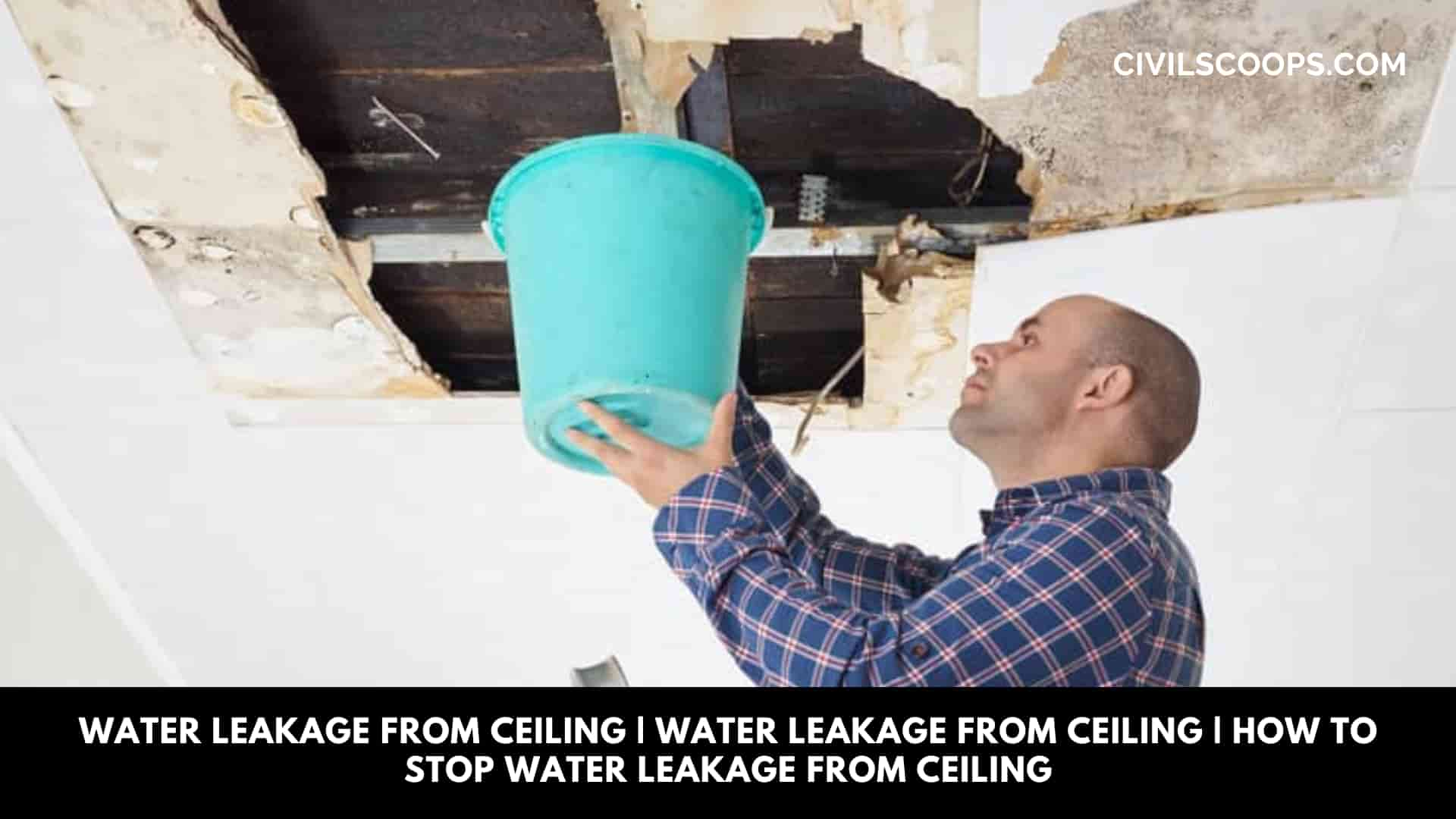
Table of Contents
Information of Water Leakage from Ceiling
Water is one of the most important resource but it is also the biggest enemy of construction materials. The water leakages problems can adversely affect the structures and masonry.
Water can be the most destructive element for structures that are mainly constructed from concrete. So, it is very important that the water leakage should be detected as early as possible and treated well so that it will not further affect the building.
In this article, we will be going to see the water leakage from the ceiling and how you can stop water leakage from the ceiling.
What Is Water Leakage from Ceiling?
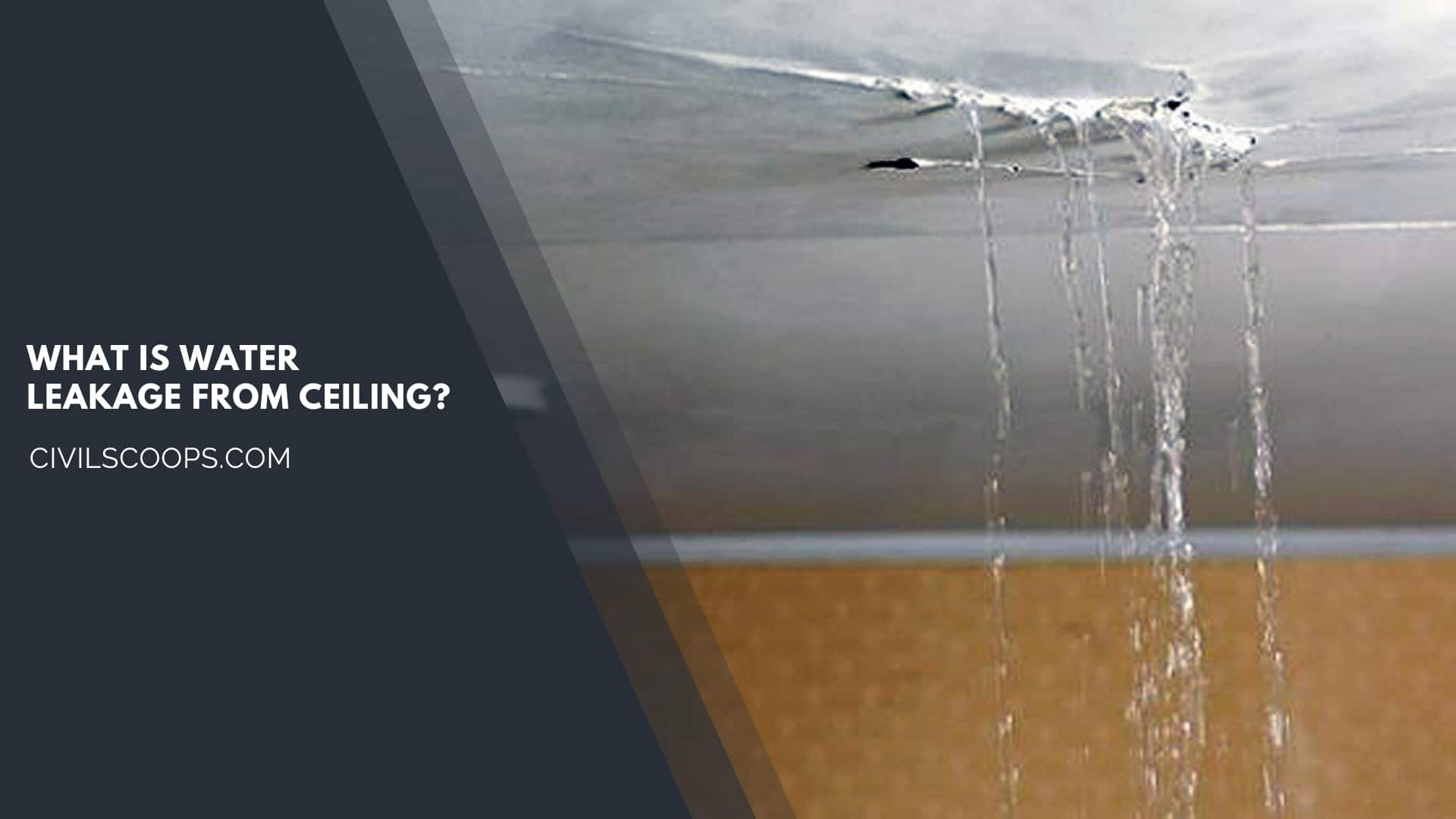
The water which gets percolated from the roofs and then to the ceilings due to the improper Water Leakage from the ceiling is one of the common problems that is found in the ceiling of your house.
When the water gets percolates from the ceiling area of the roof is known as ceiling water leakage.
The leakages from the ceilings are one of the biggest challenges for the house owners because it is very difficult to identify the exact location of the leakage.
The leakages in the ceiling mainly occur due to the wear and tear of the membrane.
The leakages are generally found in the old structures and mostly found in the areas that are mainly connected to the water such as bathrooms and Toilets and washbasins etc.
Signs of Water Leaking from Ceiling
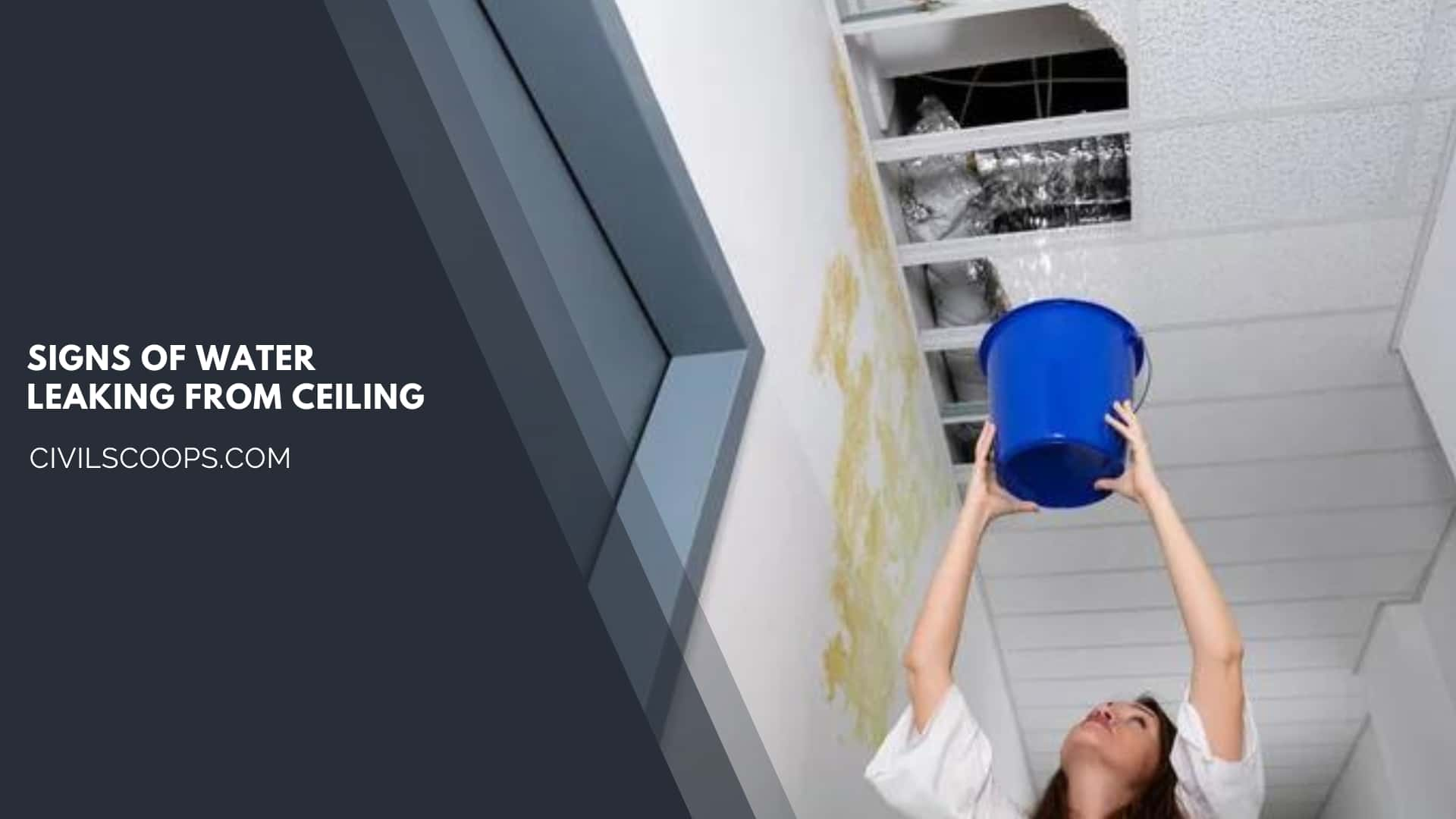
- The issues like discoloration, sagging of plaster or the leakage of the water from the ceiling of your house is a sign of water leaking from the ceiling.
- The sign of water leaking from the ceiling should not be taken as lightly as it will cause huge damage to the structure.
- The water leakage problems are due to various issues such as defective plumbing systems.
Causes of Water Leakages from Ceiling
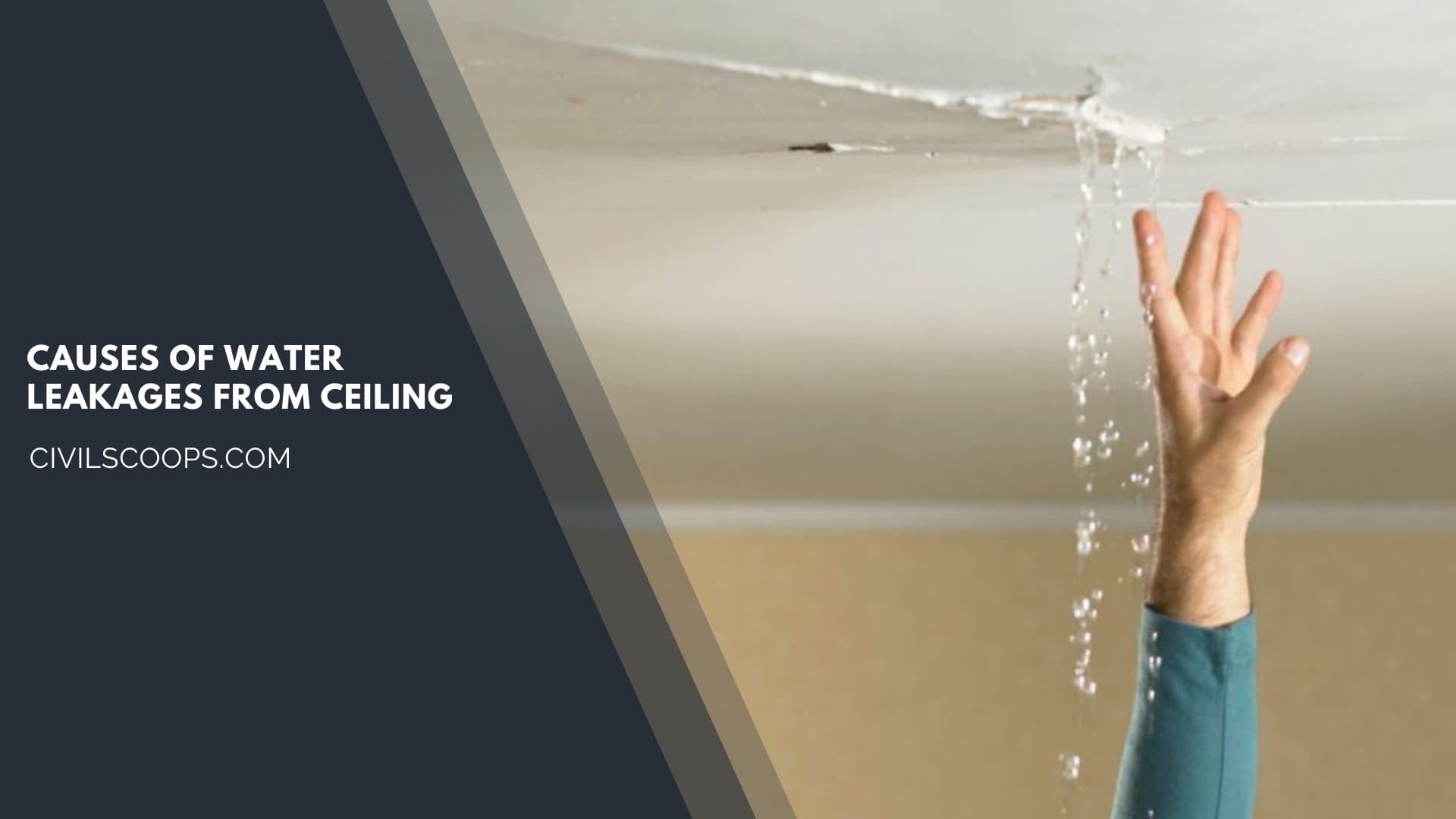
There are various causes of the water leakages that are as follows.
- The lack of slope is provided to the roofs of the building which causes the stagnation of the water.
- If the faces of the walls are exposed to the rain and it is not properly protected and waterproofing is done.
- If the building is constructed at such a location where it is impossible to drain off the rainwater.
- If the walls are not exposed to the sunlight, then there are chances of dampness.
- That’s why the orientation of the building plays an important role.
- If the lack of drainage system provided the water accumulated and causes problems of leakages.
- Poor workmanship and maintenance of the water supply pipe connections.
Effect of Water Leakage from Ceiling
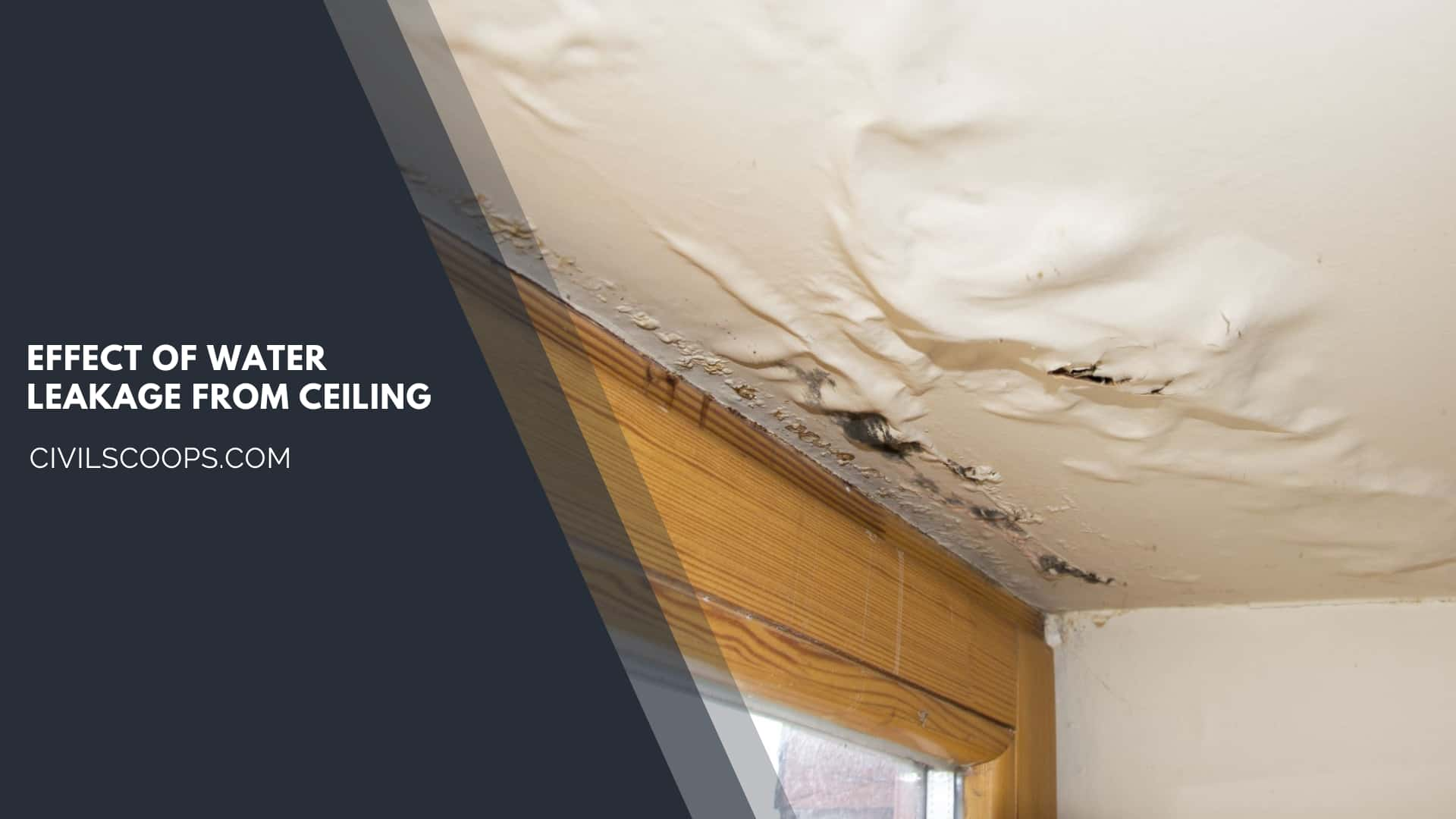
The structures are adversely affected by the water leakage that is as follows
- The water leakages cause dampness in the buildings due to which there is an unhealthy condition.
- The metals used in the construction of the buildings get corroded due to being in contact with the water.
- The electrical fittings will get deteriorated due to the water leakage from the ceiling.
- The leaky roofs badly affect the ceiling of your house and the ceiling plaster and the paints.
- The plaster of the ceilings starts expanding and the paint will get the peel off from the ceilings.
- If the house has concealed wiring and electrical fittings then the water leakage may cause a short circuit which can be very dangerous.
- Water leakage from the ceilings may affect the structural integrity of the structure.
Typical Signs Water Leaking from Ceiling Area
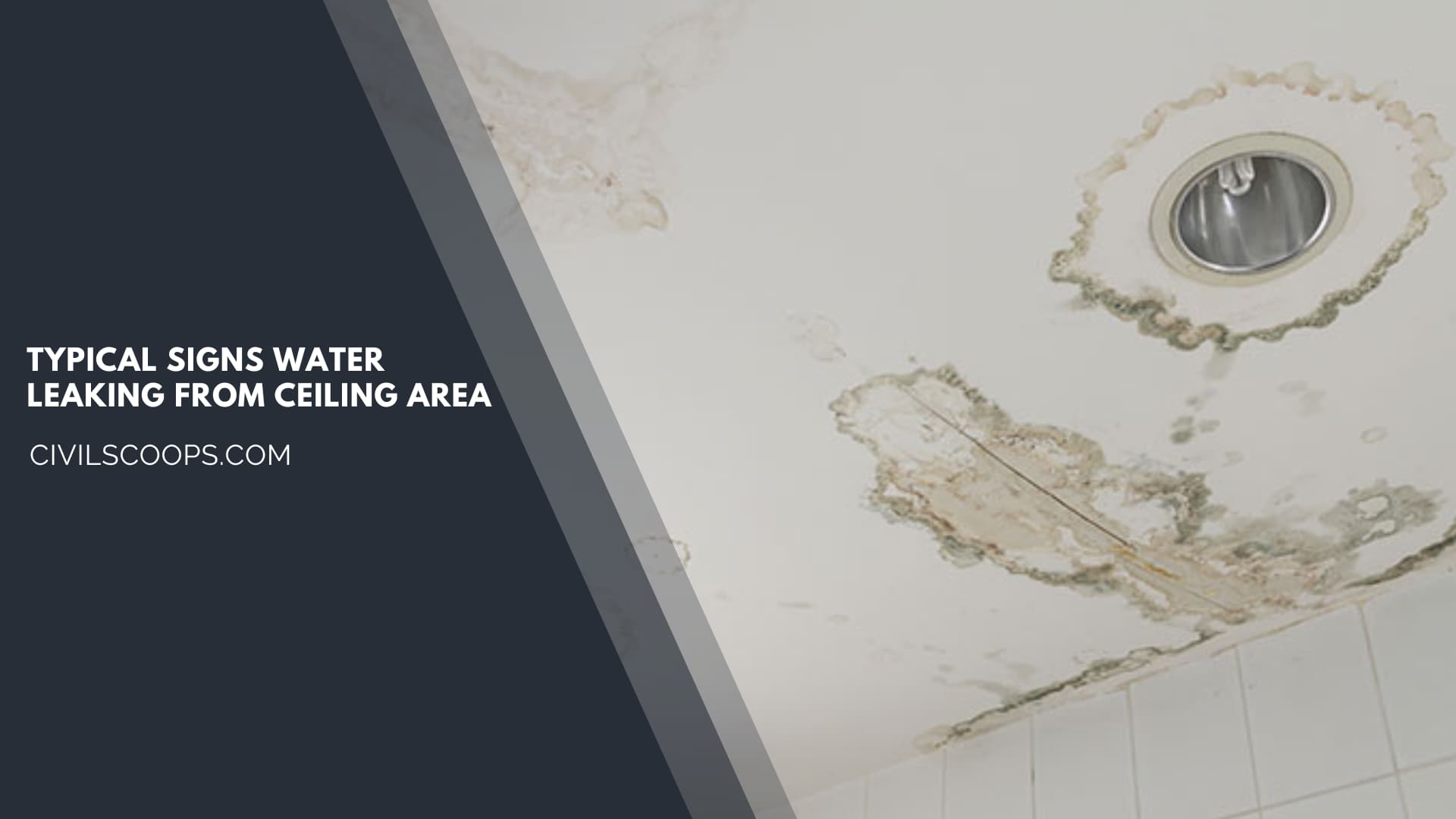
Some of the signs of leakage of water from the ceiling area are as follows
- The spots of water on the ceiling of your house are one of the primary signs of the water leakage from the ceiling area.
- The appearance of the cracks or bubbling of the surface of the paint on the ceiling is a clear indication of the water leakage and it should be treated as early as possible, otherwise, it may extend in the future.
- A dark spot or discoloration on the ceiling is a major sign of water leakage through the ceilings.
- The sagging of the ceilings and discoloration is a dangerous problem and can be repaired immediately otherwise it may affect the structural integrity of the building.
Finding the Source of Water Leakage from Ceiling
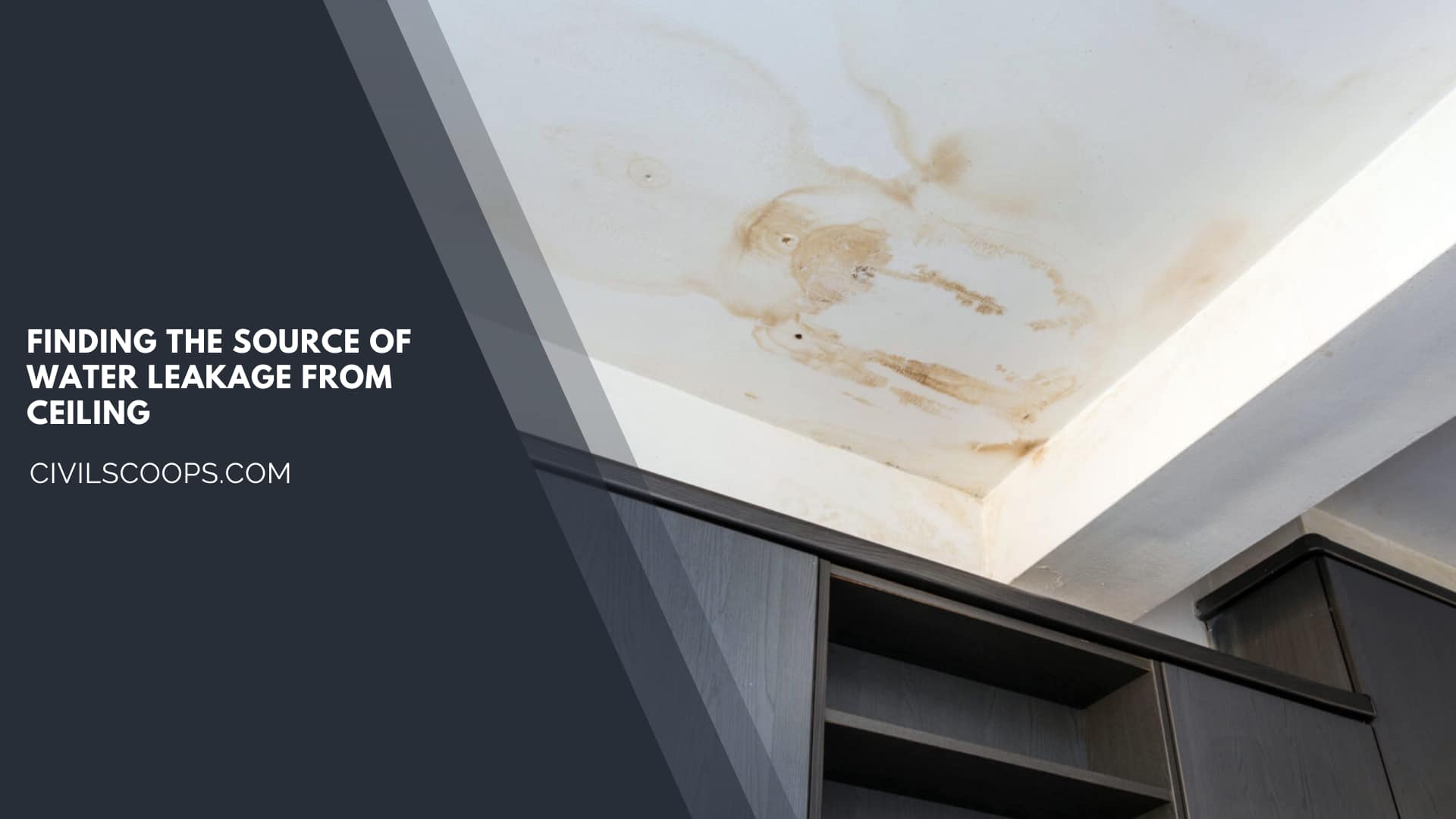
It is very important to detect the exact location of the water leakage so that it can be treated properly with the appropriate method.
Each source of water leakage has some characteristics and you may find some symptoms that will help you to identify the exact location of the water leakages.
Here we have listed some of the symptoms of the water leakages
1. Damages in Plumbing and Sanitary Fittings

The problems in the plumbing pipes or fixtures are the potential source of the water damage. The water that is leaking is often due to faulty plumbing issues.
2. Damaged Waterproofing System
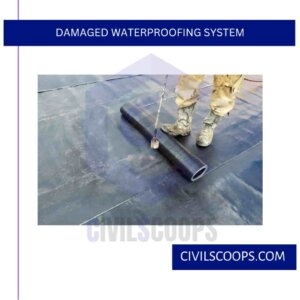
If the seepage or leakages are very slow, with the rate of dripping around every 3 seconds interval, then it could be due to a damaged waterproofing system.
Another common type of symptom includes multiple areas of dripping and occasional leak.
3. Roof Water Leakage
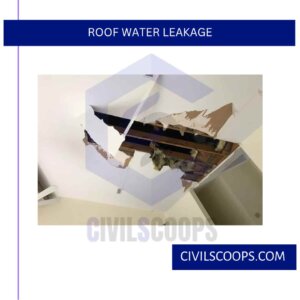
The Water Leakages from the roofs are caused because of the rainwater. The water leakages usually happen during or after rains and are more severe during downpours.
It is challenging to detect the root cause of the problem as the roof has multiple elements a detailed assessment and regular maintenance of the roof it should be done.
How to Stop Water Leakage from Ceiling?
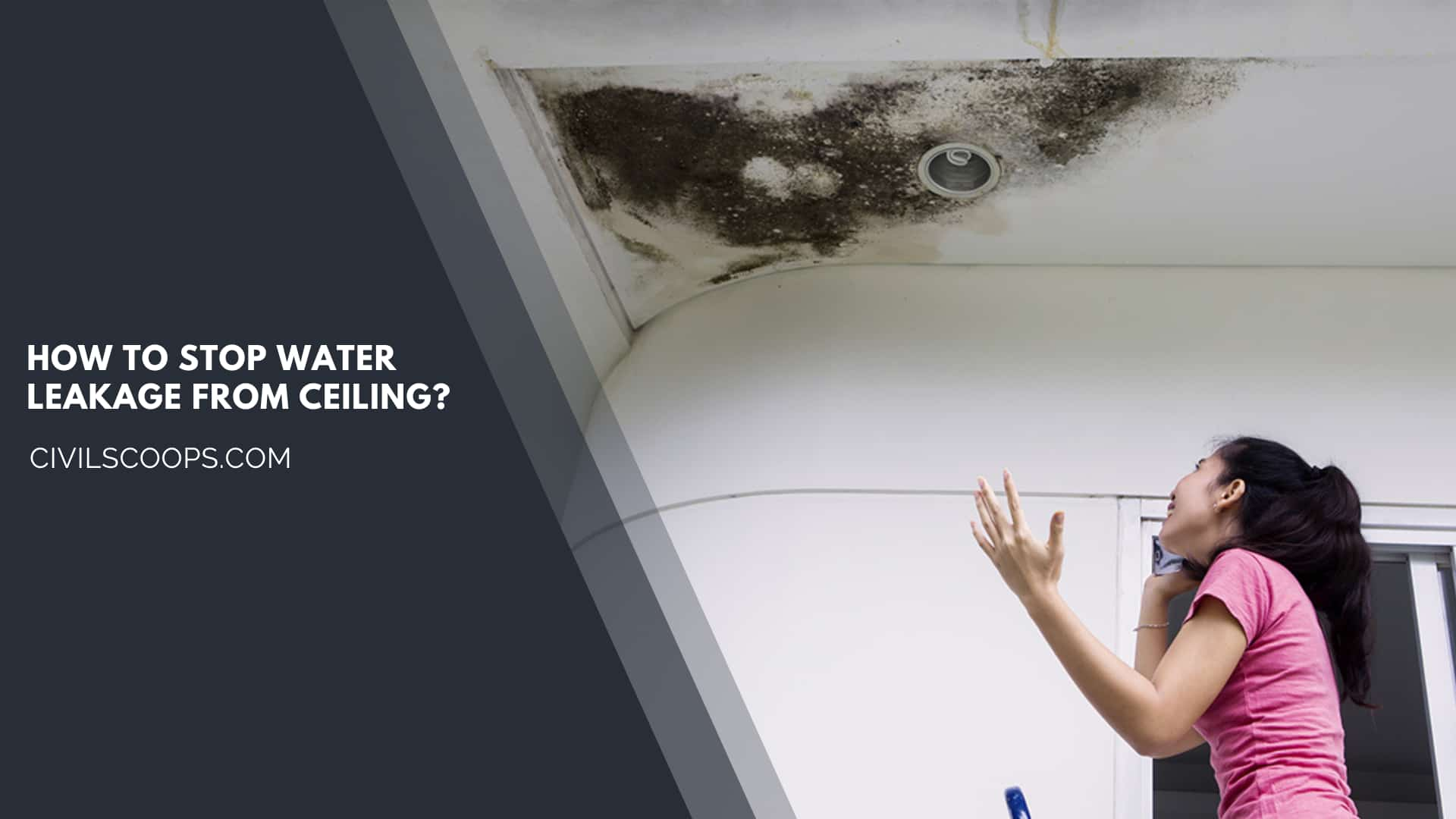
- The root cause of the water leakage from ceilings is due to stagnation of water on the roof.
- There are various causes of the water leakage from the ceilings and the main reason is due to inadequate slope provided to the roof due to which there will be dampness in flat roofs.
- The leakages from ceilings can be avoided to the great extent by providing adequate slope to the roofs. In the case of the RCC slab roofs, the proper grading above a slope of 1 in 100 is to be considered desirable.
- This can be achieved by varying the thickness of the material that is used in the terrace.
- In addition to the provision of the slopes, the proper water pipes or outlets should be installed. One pipe of 10 cm diameter should be installed or suitable for every 30 sq.m of the area of the roof for effective drainage.
- These pipes can be connected to the wells or rainwater harvesting so that they can be effectively used.
Treatment for Water Leakage from Ceilings for Flat Roofs
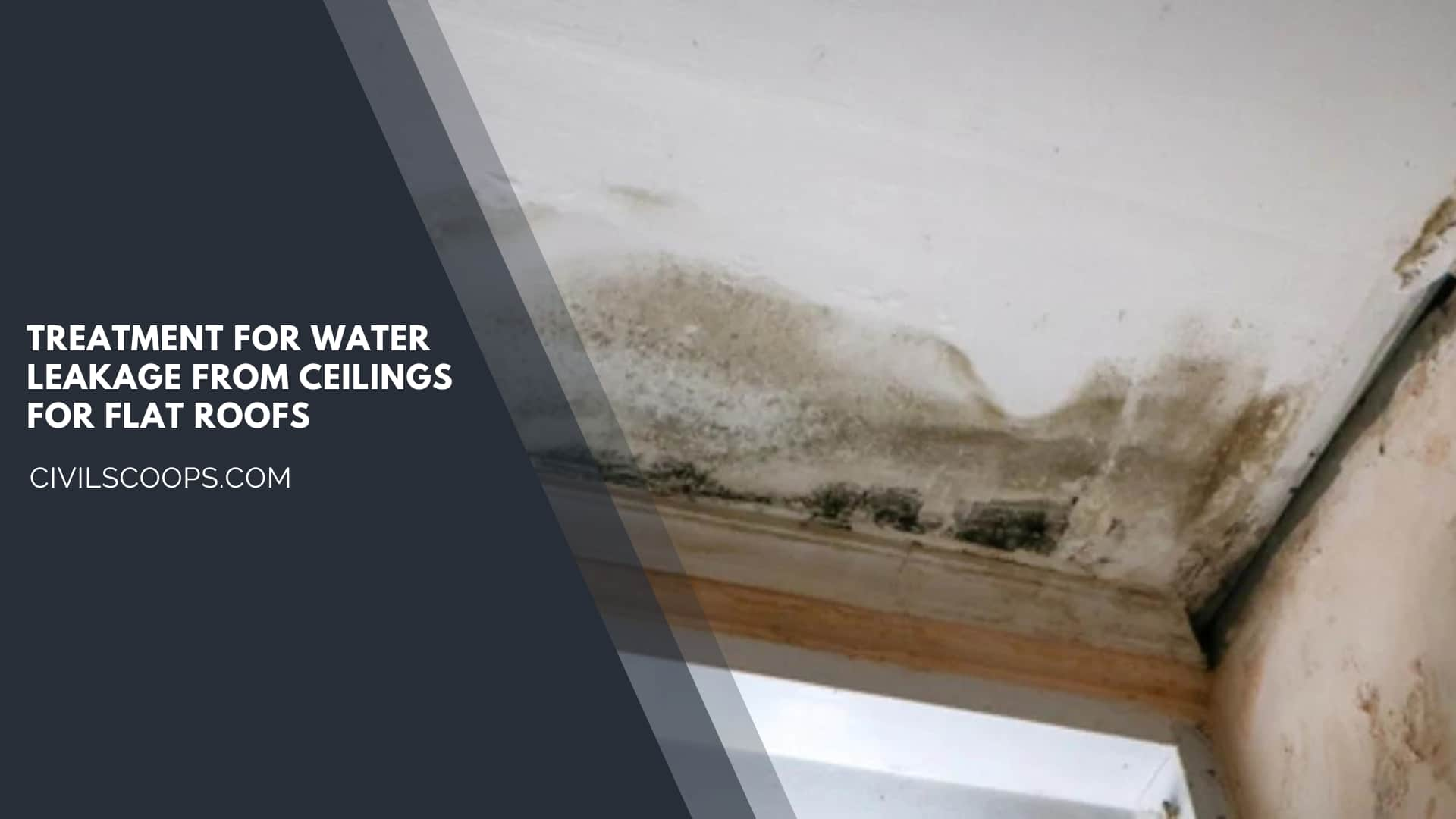
- It is very important that effective ceiling waterproofing should be done for the protection of residential, commercial, and industrial buildings.
- The Flat roofs require heavier and costlier waterproofing treatment as compared to the waterproofing treatment required for the sloped roofs.
- Repair and fill all the cracks on the flat slabs, because the cracks are responsible for the water leakages.
- The material that is used for the waterproofing should have good resistance to water and have adequate thermal insulation.
[su_box title=”FAQ” style=”default” box_color=”#333333″ title_color=”#FFFFFF” radius=”3″ class=”” id=””]
Water Leakage from Ceiling
Common Reasons Water Leaks From Ceilings
There are two main reasons you could experience water leaking from ceilings: Either there is an issue with your plumbing, such as a damaged pipe or leaking shower. Or there is an issue with your roof, such as a hole or overflowing gutters.
How to Stop Leakage from Ceiling?
Repair the Ceiling
For small leaks, you can use a fan pointed at the ceiling. If the damaged area is minor, you may then be able to patch the hole with spackle and repaint. For larger leaks, you may need to cut away the damaged section to dry off the gap above your ceiling with a fan.
How to Stop Water Leakage from Ceiling?
What To Do If Water Is Leaking Through Your Ceiling: Step-By-Step Instructions
- Get something to contain the water. Grab one or more waterproof containers to catch dripping water.
- Move or cover your furniture.
- Soak up water on the floor.
- Make a small hole for drainage.
- Call a plumber or roofer.
Water Leakage
Water leakage is the process by which liquids (mainly water) seep into your home through porous materials, cracks, and crevices, leaving damp stains on the walls and ceilings that give them an unattractive aspect.
Bathroom Ceiling Leak Repair
Even if the water leak appears quite small, there may be more damage you can’t see. If the leak is big it’s probably still a good idea to call in a professional, so they can assess the wider damage.
Bathroom Ceiling Leak Repair Cost
Ceiling waterproofing Cost and Repairs Cost
On average, For plaster or drywall, the ceiling repair costs between INR 21,969/- to INR 87,878/-. a) For small holes, dents, or hairline cracks, it costs between INR 7,323/- to INR 18,307/-, as it only requires the joint tape and spackle to repair the damage.
Slab Leakage Repair
There are several ways to repair a leaking pipe inside a concrete slab. If the leak is small, the plumber may be able to apply epoxy—a resin that seals small gaps and leaks—and will charge around $200. For larger leaks, some or all of the pipe will need to be replaced at a price of up to $2,000.
Concrete Wall Water Leak Repair
- Identify Source: Locate the leak’s origin on the concrete wall.
- Clean and Prep: Clear the area of debris, using a chisel and wire brush.
- Fill Cracks: Use hydraulic cement or concrete patch for small cracks.
- Seal Larger Leaks: Apply waterproof sealant or epoxy injection for bigger issues.
- Smooth Surface: Ensure the repaired area is level with the rest of the wall.
Basement Water Leakage Repair
Interior basement waterproofing requires two components: a drainage system and a sump pump. The original poured concrete floor is removed around the perimeter of your basement, and the drain tile is placed on top of (or next to) your foundation’s footing.
Ceiling Water Leak Repair
If the leak has left only a small hole, fill it with joint compound and paint over it. For larger areas of water damage, follow these steps: Remove all damaged materials such as insulation or drywall with a drywall saw. Cut back the drywall to the closest joists for attaching the replacement sheet.
Leak Behind Drywall
Know the Signs of a Water Leak Inside a Wall
It may look like the paint or wallpaper on your drywall is bubbling or bulging. If your wall appears to bulge outward, that could be a sign of a major leak that needs to be addressed ASAP.
Water Leakage Repair
Step By Step Water Leak Repairs
- Turn Off the Water Supply. First things first.
- Clean Up Any Water & Dry The Pipes. Clean up any water that may have accumulated on any surfaces that surround the leak.
- Apply Plumbing Putty to Leaky Pipe.
- Replace The Leaky Pipe.
- Using Clamps for Water Leak Repairs.
Water Leaked Through Ceiling
There are two main reasons you could experience water leaking from ceilings: Either there is an issue with your plumbing, such as a damaged pipe or leaking shower. Or there is an issue with your roof, such as a hole or overflowing gutters. Where and when your ceiling is leaking can offer good evidence as to the cause.
Non Invasive Water Leak Detection
Tools used for non-invasive leak detection include:
Also referred to as thermography, thermal cameras detect water pipes buried under concrete and inside walls. They help leak detection service experts note surface temperature variations that identify leaking water.
How to Fix Ceiling Leakage?
- Identify and fix the source of the leakage, whether it’s a roof issue, plumbing problem, or condensation buildup.
- Safely contain and drain any water.
- Temporarily cover the affected area.
- Repair the source (roof, plumbing, ventilation) to prevent future leaks.
- Fix ceiling damage by replacing damaged parts and repainting if needed.
- Consider professional help for extensive damage or complex repairs.
How to Repair Ceiling Leakage?
Identify and fix the source of the leak, contain and remove water, repair ceiling damage by replacing damaged parts, and consider professional help for major repairs.
How to Detect Water Leakage in Ceiling?
You can detect water leaks in walls or ceilings when: there are puddles of water near a wall. there is discoloration in the wall or ceiling. there is a texture change in the wall or ceiling.
How to Fix Water Leakage in Ceiling?
- Locate Source
- Safety
- Contain Water
- Temporary Cover
- Dry and Clean
[/su_box]
[su_note note_color=”#F2F2F2 ” text_color=”#333333″ radius=”3″ class=”” id=””]
Like this post? Share it with your friends!
Suggested Read –
- Types of Wooden Beams
- Introduction to Stair Landing | What Is Stair Landing | Stair Landing Dimensions
- What Is Skillion Roof | Types of Skillion Roof | Uses of Skillion Roof | How to Build a Skillion Roof
- What Is Floating Slab | Floating Slab Construction | How to Build a Floating Slab | Advantages & Disadvantages Floating Slabs
- What Is Cedar Wood | Is Cedar a Hardwood | Uses of Cedar Wood | Types of Cedar | Red Cedar Wood | Facts About the Cedar Tree
[/su_note]
